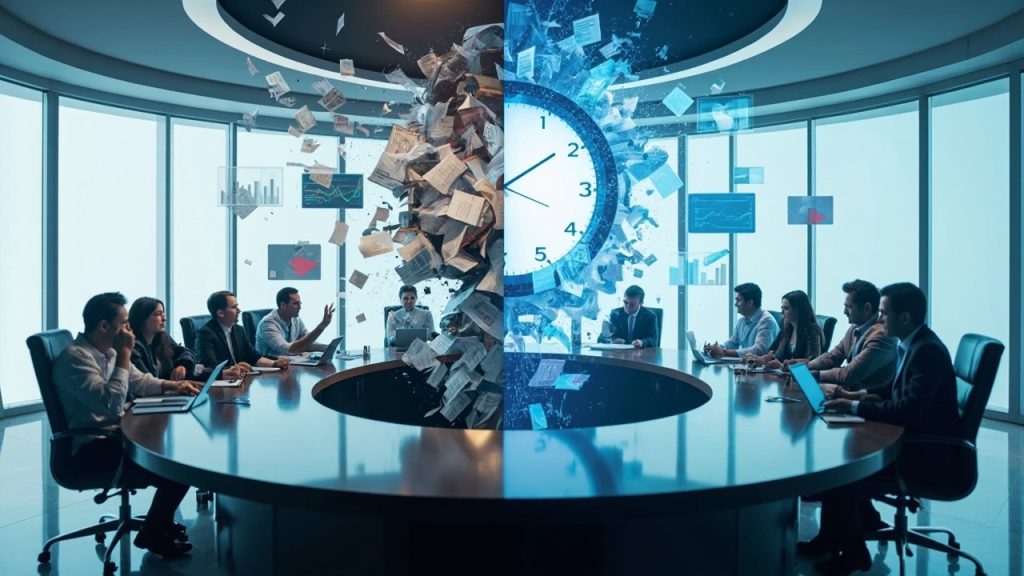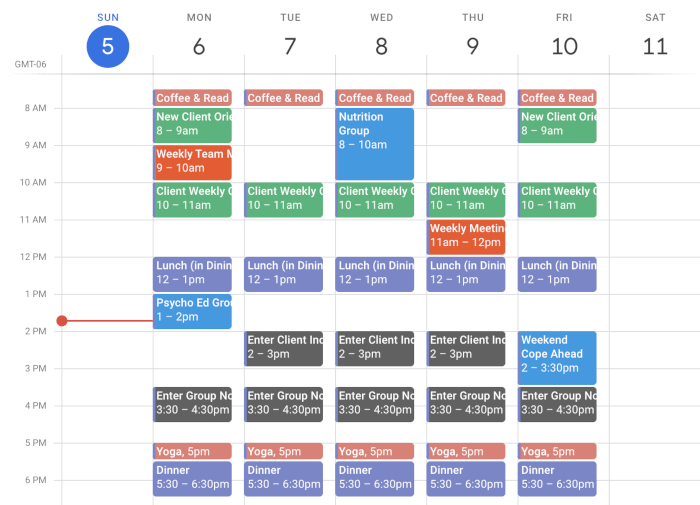Every minute spent in an unproductive meeting costs your organization more than you realize. According to a 2022 Microsoft Work Trend Index study, the average knowledge worker spends 43% of their week in meetings, yet 67% of employees report feeling too exhausted to be productive afterward. The good news? Research from Harvard Business Review demonstrates that organizations implementing strategic meeting efficiency tips can reduce meeting duration by up to 50% while actually improving decision-making quality and participant satisfaction. This transformation isn’t just about saving time—it’s about reclaiming focus, boosting team morale, and driving measurable business results. Whether you’re leading a startup team or managing enterprise-level operations, the proven strategies outlined in this guide will help you eliminate meeting fatigue, accelerate project timelines, and create a workplace culture where every gathering serves a clear, valuable purpose.
The Hidden Cost of Inefficient Meetings in Modern Workplaces
The financial impact of poorly run meetings extends far beyond the conference room. A 2023 analysis by Doodle revealed that inefficient meetings cost U.S. businesses approximately $399 billion annually, with the average employee losing 21.5 hours per month to unproductive discussions. This staggering figure represents more than just wasted salary hours—it encompasses missed deadlines, delayed product launches, and decreased employee engagement across entire organizations.
Research from the MIT Sloan School of Management identifies three primary cost drivers: preparation inefficiency, where teams spend excessive time gathering information that should have been distributed beforehand; attention fragmentation, as multitasking during meetings reduces cognitive performance by up to 40%; and decision paralysis, where unclear objectives lead to repeated discussions on the same topics. Understanding these financial implications becomes crucial when you calculate the true cost of your meetings and recognize the immediate ROI potential of implementing structured efficiency improvements.
Beyond monetary losses, inefficient meetings create a cascading effect on workplace culture. Studies from the Journal of Business Research show that employees who attend more than 15 hours of meetings per week report 35% lower job satisfaction and are twice as likely to consider changing roles. This cultural deterioration directly impacts retention rates, recruitment costs, and overall organizational performance, making meeting optimization a strategic imperative rather than a simple productivity enhancement.
Essential Meeting Efficiency Tips to Transform Your Workplace Culture
Creating a culture of efficient meetings requires systematic implementation of evidence-based practices that address both structural and behavioral elements. The most successful organizations establish clear meeting protocols that become second nature to their teams, starting with the fundamental principle of purpose-driven gatherings. According to research from Stanford’s Graduate School of Business, meetings with explicitly defined outcomes are 73% more likely to achieve their objectives within the allocated timeframe.
The foundation begins with adopting a “meeting-first mentality” where every proposed gathering must pass three essential criteria: a specific decision needs to be made, multiple perspectives are required for that decision, and the discussion cannot be effectively handled through asynchronous communication. This filtering process alone eliminates approximately 40% of unnecessary meetings, as documented in studies from the Corporate Executive Board. Organizations implementing these meeting efficiency tips consistently report improved team satisfaction and accelerated project delivery timelines.
Successful cultural transformation also requires establishing clear communication norms that extend beyond individual meetings. Teams that adopt standardized meeting types—such as 15-minute daily standups, 30-minute decision meetings, and 60-minute strategic planning sessions—create predictable frameworks that participants can prepare for effectively. This approach aligns with async-first team principles, where synchronous time becomes premium real estate reserved for truly collaborative work.
Pre-Meeting Strategies That Cut Discussion Time in Half
Effective meetings begin long before participants enter the room, with preparation strategies that can dramatically reduce actual discussion time. Research from the Harvard Business School shows that meetings with comprehensive pre-work completed by participants are 58% shorter on average while producing higher-quality decisions. The key lies in transforming preparation from a passive activity into an active, structured process that eliminates basic information sharing during the actual meeting.
The most impactful pre-meeting strategy involves distributing a detailed agenda at least 48 hours in advance, accompanied by specific preparation assignments for each participant. This agenda should include background materials, key decision points, and individual contribution expectations. Studies from the Journal of Applied Psychology demonstrate that when participants receive clear preparation guidelines, meeting discussions become 67% more focused and reach conclusions 45% faster than unprepared sessions.
Advanced preparation techniques include conducting pre-meeting surveys to identify areas of consensus, distributing decision frameworks that participants can review beforehand, and requiring written position statements on key topics. Organizations using Calendly or similar scheduling platforms can integrate preparation requirements directly into meeting invitations, ensuring all participants arrive informed and ready to engage productively. This systematic approach transforms meetings from information-sharing sessions into focused decision-making forums.
Smart Meeting Efficiency Tips for Running Focused Discussions
The execution phase of efficient meetings requires deliberate facilitation techniques that maintain momentum while ensuring comprehensive input from all participants. Research from the Center for Creative Leadership identifies structured facilitation as the single most important factor in meeting success, with trained facilitators reducing meeting duration by an average of 43% compared to informal discussion formats. Effective facilitation begins with establishing clear ground rules and maintaining strict adherence to time boundaries throughout the session.
Time-boxing represents one of the most powerful meeting efficiency tips for maintaining focus during discussions. This technique involves allocating specific time limits to each agenda item and using visual timers to keep participants aware of remaining discussion time. Studies from the MIT Center for Collective Intelligence show that time-boxed discussions produce decisions of equal or higher quality compared to open-ended conversations, while requiring 52% less total meeting time. The key is communicating time constraints clearly and redirecting off-topic discussions to designated “parking lot” items for future consideration.
Advanced facilitation techniques include using structured decision-making frameworks like the RAPID method (Recommend, Agree, Perform, Input, Decide), implementing round-robin discussions to ensure equal participation, and employing the “two-penny method” where each participant receives two tokens representing their speaking opportunities. These approaches address common meeting inefficiencies such as dominant personalities, circular discussions, and unclear decision authority, creating more balanced and productive conversations for all participants.
Technology Tools That Boost Meeting Productivity Instantly
Modern meeting technology extends far beyond video conferencing platforms, encompassing specialized tools designed to streamline every aspect of meeting management and execution. According to a 2023 survey by MeetGeek, organizations using AI-powered meeting assistants report 34% shorter meeting durations and 89% improved follow-through on action items. These technological solutions address common inefficiencies through automated note-taking, real-time transcription, and intelligent action item extraction.
Collaboration platforms like Microsoft 365 and Google Workspace integrate seamlessly with meeting workflows, enabling real-time document sharing, collaborative editing, and instant decision documentation. Research from the International Data Corporation shows that teams using integrated collaboration tools spend 29% less time in follow-up meetings because decisions and changes are captured and shared automatically during the initial discussion. This integration eliminates the common cycle of “meetings about meetings” that plague many organizations.
Advanced meeting technology includes AI-powered scheduling assistants that optimize meeting timing based on participant energy levels and availability patterns, virtual whiteboarding tools like Miro and Figma that facilitate visual collaboration, and sentiment analysis tools that provide real-time feedback on meeting effectiveness. Organizations implementing comprehensive meeting technology stacks report increased participant engagement and significantly improved meeting ROI, as these tools help maintain the strategies that keep teams productive at work.
Post-Meeting Actions That Maximize Follow-Through and Results
The true measure of meeting efficiency extends beyond the session itself to encompass the speed and accuracy of follow-through execution. Studies from the Project Management Institute reveal that organizations with structured post-meeting processes achieve 87% higher completion rates on action items compared to teams relying on informal follow-up methods. Effective post-meeting workflows begin immediately after the session ends, with automated systems capturing decisions, assignments, and deadlines while the discussion remains fresh in participants’ minds.
The most successful post-meeting strategy involves distributing comprehensive meeting summaries within 24 hours, including specific action items with assigned owners and clear deadlines. Research from the Harvard Business Review shows that action items documented and distributed within this timeframe have a 76% completion rate, compared to just 31% for items communicated after 48 hours. These summaries should follow a standardized format that includes key decisions made, action items assigned, and relevant context for each assignment.
Advanced post-meeting techniques include implementing tracking systems that monitor action item progress, scheduling automatic check-in reminders at predetermined intervals, and creating shared dashboards that provide real-time visibility into project advancement. Tools like Asana, Notion, and Monday.com integrate directly with meeting platforms to automate much of this process, ensuring that meeting decisions translate into measurable progress without requiring additional coordination meetings.
Advanced Meeting Efficiency Techniques for Cross-Functional Teams
Cross-functional meetings present unique challenges that require specialized approaches to achieve optimal efficiency. Research from the McKinsey Global Institute indicates that cross-functional teams are 35% more likely to experience meeting inefficiencies due to differing communication styles, competing priorities, and varied technical vocabularies. However, organizations that implement targeted strategies for these complex collaborations achieve breakthrough innovations and accelerated project timelines that justify the additional coordination effort required.
The foundation of efficient cross-functional meetings lies in establishing shared frameworks that bridge departmental differences. Successful organizations create standardized templates for project updates, decision matrices that account for multiple departmental perspectives, and communication protocols that ensure all functional areas can contribute effectively. Studies from the Journal of Product Innovation Management show that cross-functional teams using structured collaboration frameworks complete projects 41% faster than those relying on ad hoc coordination methods.
Advanced techniques for cross-functional meeting efficiency include rotating meeting leadership among departments to ensure balanced perspectives, implementing decision-weighting systems that account for functional expertise, and creating visual project maps that help all participants understand interdependencies. These approaches address the complexity inherent in cross-functional work while maintaining the focus and momentum essential for efficient meetings. Organizations mastering these techniques often become innovation leaders in their industries, as they can coordinate complex initiatives more effectively than competitors.
Measuring Success: How to Track Your Meeting Improvement Results
Sustainable meeting efficiency improvements require systematic measurement and continuous optimization based on quantifiable data. According to research from the Corporate Executive Board, organizations that actively measure meeting effectiveness achieve 67% greater improvements in productivity metrics compared to those implementing changes without tracking systems. The key lies in establishing baseline measurements before implementing changes and monitoring both quantitative metrics and qualitative feedback consistently over time.
Essential metrics for tracking meeting efficiency include average meeting duration, participant satisfaction scores, action item completion rates, and decision implementation speed. Advanced measurement approaches incorporate cost-per-meeting calculations, participant engagement levels measured through technology analytics, and correlation analysis between meeting efficiency improvements and broader business outcomes. Studies from the Harvard Business School show that organizations tracking these comprehensive metrics identify optimization opportunities 89% faster than those using informal assessment methods.
The most sophisticated measurement systems include automated data collection through meeting platforms, regular pulse surveys to gauge participant experience, and longitudinal analysis to identify trends and patterns over time. Tools like Microsoft Viva Insights and Google Analytics can provide detailed insights into meeting patterns and effectiveness, enabling data-driven decisions about process improvements. This systematic approach ensures that meeting efficiency tips translate into measurable business value and sustainable cultural change.
Transforming meeting culture from time-consuming obligation to strategic advantage requires commitment, systematic implementation, and continuous refinement of proven techniques. The evidence is clear: organizations that master meeting efficiency gain competitive advantages through faster decision-making, improved employee satisfaction, and enhanced project delivery capabilities. By implementing the comprehensive strategies outlined in this guide—from pre-meeting preparation and structured facilitation to advanced measurement systems—your team can achieve the 50% time reduction goal while actually improving meeting quality and outcomes. Start with the foundational techniques that address your most pressing challenges, then gradually incorporate advanced strategies as your meeting culture matures. The investment in meeting efficiency pays dividends far beyond saved time, creating a workplace where focused collaboration drives meaningful results and every participant leaves sessions energized and aligned on clear next steps.



